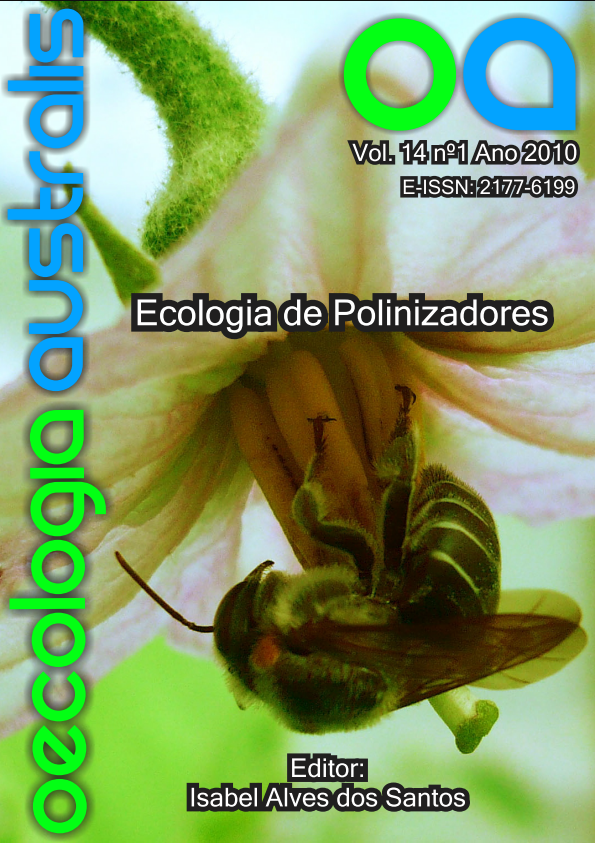VISITING BEES OF Cucurbita FLOWERS (CUCURBITACEAE) WITH EMPHASIS ON THE PRESENCE OF Peponapis fervens SMITH (EUCERINI -- APIDAE) - SANTA CATARINA, SOUTHERN BRAZIL
Keywords:
Bee fauna, community, crop, pollination, solitary bee.Abstract
Cucurbita flowers are monoecious, the male and female flowers requiring a pollinator to transfer pollen. Bees were systematically collected as they visited flowers of three cultivated Cucurbita species grown at seven separate localities of Santa Catarina state in southern Brazil. Additionally, pantraps were used to estimate the general bee diversity at three of these locations. In total, 3.270 bees were sampled representing 50 species, with 3.153 bees (24 species) counted during censuses on the flowers and 117 individuals of 30 species in the pantraps. The most abundant bee species was Apis mellifera (32%) followed by the squash specialist, Peponapis fervens (25%). This latter species was present at five of the seven study localities. It was the most abundant bee at Cucurbita in three of these places. Nests of P. fervens were found in two localities. Each vertical nest was excavated in clay soil and occupied by a single female. Pollen analyses of the larval provision revealed that the females collect pollen only on squash flowers (100% Cucurbita pollen grains) confirming its specialization. The presence of this bee species in the study area seems to be related to the good environmental condition and stewardship by the farmers, especially their careful use of insecticides.Downloads
Download data is not yet available.
Downloads
Published
2017-02-20
Issue
Section
Articles


